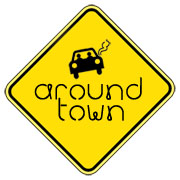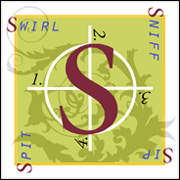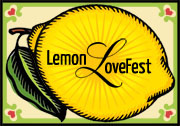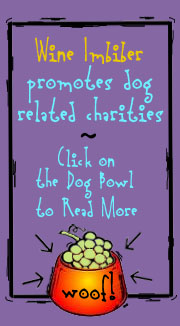|
22 Sep
2008 |
Chianti (a brief history) 
Chianti—a single word that floods my mind with smells, flavors, images and sounds from decades of my life. I come from a family where a few sips (occasionally gulps) of wine with dinner at a very early age was not unusual, so my earliest memory of Chianti is from the straw–covered squat bottle of red Italian wine (aptly named fiasco) served mostly at authentic Italian restaurants in the 1960s—complete with red and white checkered tablecloths, platters of spaghetti, wooden bowls of salad tossed in too much Italian dressing and endless amounts of steaming garlic bread. The house Chianti back then was usually pretty harsh, but when you are very young and get to play like an adult, anything will do. A couple of decades passed before I gave Chianti a serious second try and started to realize that distinguishing one Chianti from another isn’t a simple task.
Today, there are many very excellent Chiantis available. So, I was very eager to spend a couple of days driving through the Chianti countryside this past June to see if we could find the best Chianti of our lives. The heart of the Chianti countryside sits east of superstrada 2 that runs between Florence and Siena in Tuscany and the A1 autostrada that runs southeast from Florence. The easiest way to get started is to take the SR222 (called the “Chiantigiana Road”, “Strada del Chianti” or “Chianti Road”) south from Florence or north from Siena. But don’t just drive along the 222 or you’ll miss a lot of Chianti, including an important part of the original Chianti province—the part that has some of the finest Chianti Classico of all.
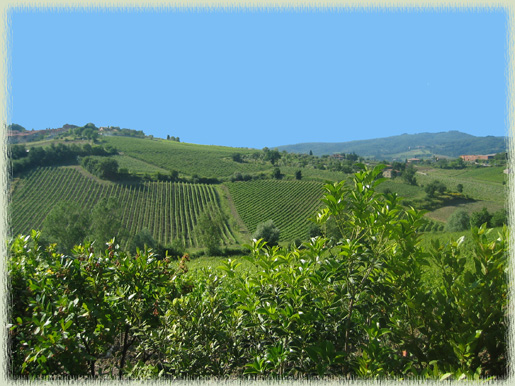
With so many wineries and only two days to spend, where should we go and which wineries should we try to visit? If you ever face the same question, this little history I’ve compiled from various sources might help.
From the 14th century until 1932, the original Chianti province (formally defined in 1716 by a decree of Cosimo III, Grand Duke of Tuscany, which became the world’s first wine production code) encompassed only the area near the villages of Castellina, Gaiole and Radda. Castellina sits along the southern end of the Chianti Road and Gaiole and Radda are east of Castellina. In 1932, a new, much larger Chianti area was defined. The new Chianti area was divided into seven (now eight) sub–areas (expressions of the different terroirs): Classico (parts of the Florence and Siena provinces), Colli Aretini (parts of the Arezzo province), Colli Fiorentini (parts of the Florence province), Colline Pisane (parts of the Pisa province), Colli Senesi (parts of the Siena province), Montalbano (parts of the Pistoia, Prato and Florence provinces), Rùfina (parts of the Florence province) and Montespertoli (part of the Colli Fiorentini sub–area until 1996).
The original Chianti province became a small part of the Classico sub–area (or sub–zone) of the Chianti region. In 1967, Chianti earned the DOC designation. The DOCG designation for Chianti followed in 1984 (with Chianti Classico as a sub–designation with stricter rules), and in 1996 Chianti Classico earned its own separate DOCG designation, clearly setting its production regulations apart from other Chiantis. Producers in the non–Classico areas complained that consumers were confused by the plethora of terroir designations (most likely a reaction to the Classico producers who had a longer history and generally a superior quality reputation) and wanted a designation that focused on quality instead of area. So, also starting in 1996, vineyards registered in Chianti sub–zones other than Classico were permitted to produce wines designated Chianti Superiore, but the trade–off was that they must omit their sub–zone name from the label.
The Chianti Classico landscape is quite hilly and was originally a vast forest of chestnut and oak trees. During the middle ages, areas of the forest were cleared for cultivation of vines and olive trees. Today, it is an inviting combination of forest, vineyards, olive groves, and small towns.
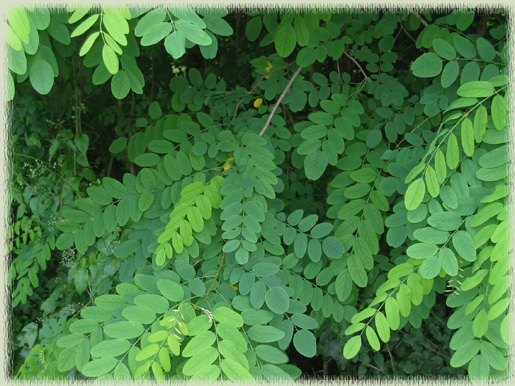
Due to our time limit, we decided to explore the Chianti Classico zone. Not every high-quality Chianti is produced in the Classico zone, but it is the original Chianti–producing area and is home to so many excellent expressions of this classic vino. So, history and convenience narrowed our focus. It also dictated exactly what would be poured into our glasses.
In the 19th century, Baron Bettino Ricasoli (a Chianti producer and minister in Tuscany who eventually became the prime minister of Italy) established the Chianti standard of 70% Sangiovese grapes, 15% Canaiolo grapes and 15% Malvasia Bianca (white) grapes. The principal grape in Chianti is and always has been Sangiovese (with limited exception, Chianti must be produced with at least 80% Sangiovese grapes and may be “pure” 100% Sangiovese if desired). In general, Chianti may also include the juice of other grapes—up to 20% other red grapes (typically, indigenous Canaiolo or Colorino grapes and sometimes Cabernet Sauvignon, Merlot or Syrah) and (except for Chianti Classico) up to 10% white grapes (typically Trebbiano or Malvasia Bianca). In the past, some 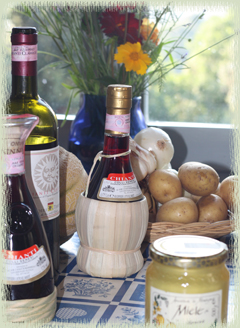 Chianti Classico producers also used a small amount (up to 6%) of white grapes, but they are no longer permitted to do so (starting with the 1996 harvest) according to the Consorzio Vino Chianti Classico (organized in 1924 to protect and promote Chianti Classico wine and formerly known by various other names over the years). Non–Classico wine designated Chianti Superiore must be at least 75% Sangiovese, with the option to use some combination of up to 10% Canaiolo, up to 10% Trebbiano or Malvasia Bianca or up to 20% other authorized grapes.
Chianti Classico producers also used a small amount (up to 6%) of white grapes, but they are no longer permitted to do so (starting with the 1996 harvest) according to the Consorzio Vino Chianti Classico (organized in 1924 to protect and promote Chianti Classico wine and formerly known by various other names over the years). Non–Classico wine designated Chianti Superiore must be at least 75% Sangiovese, with the option to use some combination of up to 10% Canaiolo, up to 10% Trebbiano or Malvasia Bianca or up to 20% other authorized grapes.
The production code for Chianti Classico is very strict and specifies the characteristics required of DOCG–designated Chianti Classico which include, among other things, that the wine’s color be “lively ruby-red tending to garnet with aging” and the odor must be “vinous with scents of violets and a pronounced character of finesse in the aging phase”. Chianti Classico wine must be bottled in a glass container and, if the container is over 250 ml, the bottle closure must be a cork (no crown caps or twist–off closures, per favore).
Have you ever noticed the black rooster emblem on a bottle of Chianti Classico? The black rooster—gallo nero—was originally the historic symbol of the “Lega del Chianti” or “Chianti League” (in the 14th century, Florence reorganized the administration of its lands into autonomous jurisdictions called “Leagues” to rule and defend its various regions). On some bottles of Chianti Classico, the border of the black rooster emblem is red for Chianti Classico normale and gold for riserva (aged at least 2 years, including 3 months in the bottle). The old (no pun intended) vecchio silver designation is no longer permitted. In 2005, the black rooster emblem was added to the DOCG government bollino (or seal) around the neck of the bottle, enabling consumers to quickly tell that the wine in the bottle is indeed Chianti Classico.
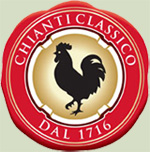 So, what is the full story of the black rooster? The rivalry and fighting between the peoples of Florence and Siena is historical fact, but legend has it that, in order to resolve their border dispute, they agreed to resort to a contest. To paraphrase the legend recounted by the Consorzio Vino Chianti Classico, two knights (one from each city) would race from their respective cities towards the other, starting when the cock first crowed in the morning. Wherever the two knights met along the way would be the exact spot where the border between the two republics would be drawn. To get their knight started on his way, the farmers of Siena raised a beautiful white rooster and let him grow very big and fat. On the other hand, the people of Florence selected a black rooster and didn’t feed him. On the day of the contest, the black Florentine rooster was so famished, he started to crow even before sunrise, so the Florentine knight was able to set out very early in the morning, long before the knight from Siena got started. They met in Fonterutoli—only 12 kilometers from Siena—which left most of the Chianti territory united under Florentine rule. This serves to explain why the black rooster was chosen as the insignia of the historic Chianti League. The artist and architect Giorgio Vasari painted the Black Rooster on the ceiling of the Salone dei Cinquecento in Palazzo Vecchio in Florence, as an allegorical representation of the Chianti region. The Consorzio Vino Chianti Classico ultimately selected this seven-century old symbol as a certification of its wines.
So, what is the full story of the black rooster? The rivalry and fighting between the peoples of Florence and Siena is historical fact, but legend has it that, in order to resolve their border dispute, they agreed to resort to a contest. To paraphrase the legend recounted by the Consorzio Vino Chianti Classico, two knights (one from each city) would race from their respective cities towards the other, starting when the cock first crowed in the morning. Wherever the two knights met along the way would be the exact spot where the border between the two republics would be drawn. To get their knight started on his way, the farmers of Siena raised a beautiful white rooster and let him grow very big and fat. On the other hand, the people of Florence selected a black rooster and didn’t feed him. On the day of the contest, the black Florentine rooster was so famished, he started to crow even before sunrise, so the Florentine knight was able to set out very early in the morning, long before the knight from Siena got started. They met in Fonterutoli—only 12 kilometers from Siena—which left most of the Chianti territory united under Florentine rule. This serves to explain why the black rooster was chosen as the insignia of the historic Chianti League. The artist and architect Giorgio Vasari painted the Black Rooster on the ceiling of the Salone dei Cinquecento in Palazzo Vecchio in Florence, as an allegorical representation of the Chianti region. The Consorzio Vino Chianti Classico ultimately selected this seven-century old symbol as a certification of its wines.
But what about the labels of Chianti produced outside the Classico sub–zone that don’t qualify for the gallo nero emblem? The Consorzio del Vino Chianti (organized in 1927 and formerly known as the Consorzio del Putto) is made up of producers located in the Chianti sub–zones outside Chianti Classico. Instead of the black rooster, they are authorized to have labels that display a pink cherub–like figure called a putto (which means “male child” in Italian, but is not a cherub, strictly speaking). A putto is often associated with romance, peace, prosperity, mirth and leisure—all fine subtexts for wine.
Now, you’ve patiently read this brief history of Chianti. So, what wineries did we discover on our journey? Keep in mind that we couldn’t get to every winery in the Chianti Classico countryside in two days. Nevertheless, we found some real gems, but that will have to be the subject of some future articles, so stay tuned. One hint: they all have one thing in common—passion for what they do and a desire to share it with everyone who comes their way. To this day, they are true to the investiture oath of the Chianti League, which begins, “I promise to keep myself close to nature, to give a religious meaning to my life, to look around me with optimism and with love.”
See also Our First Day in Chianti and Our Second Day in Chianti






